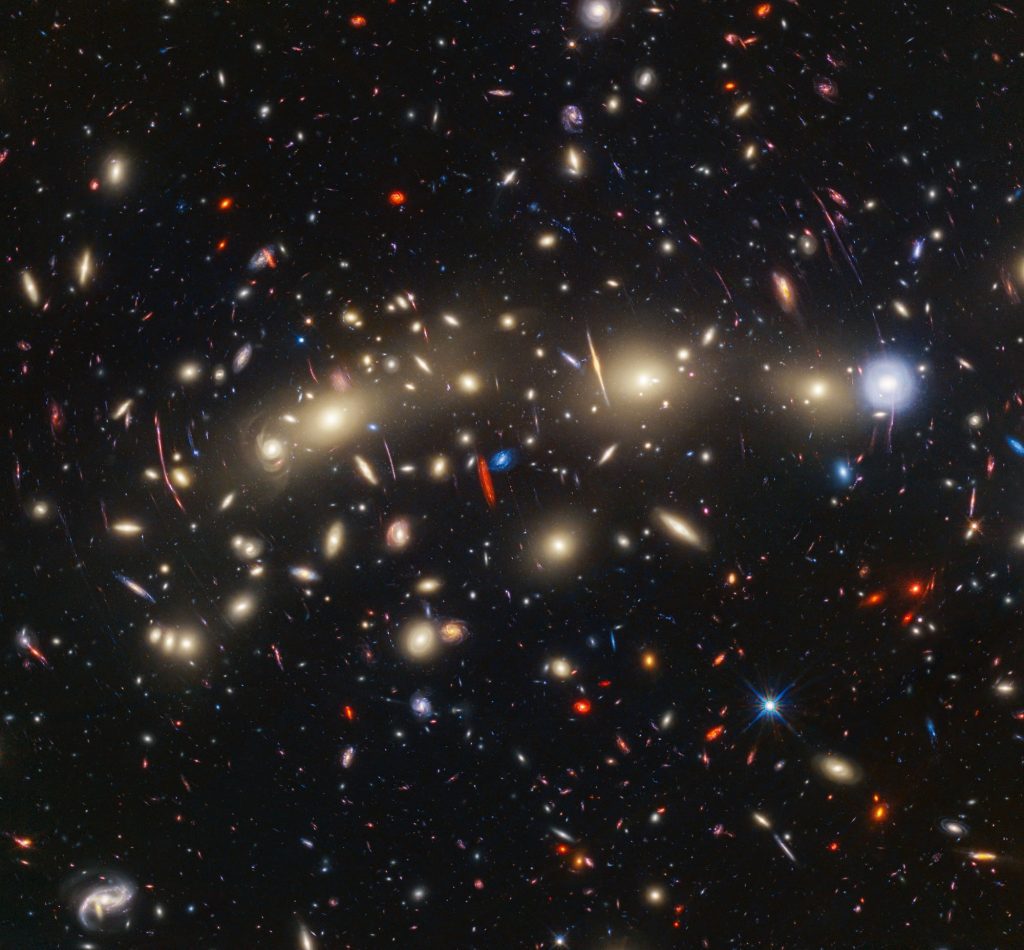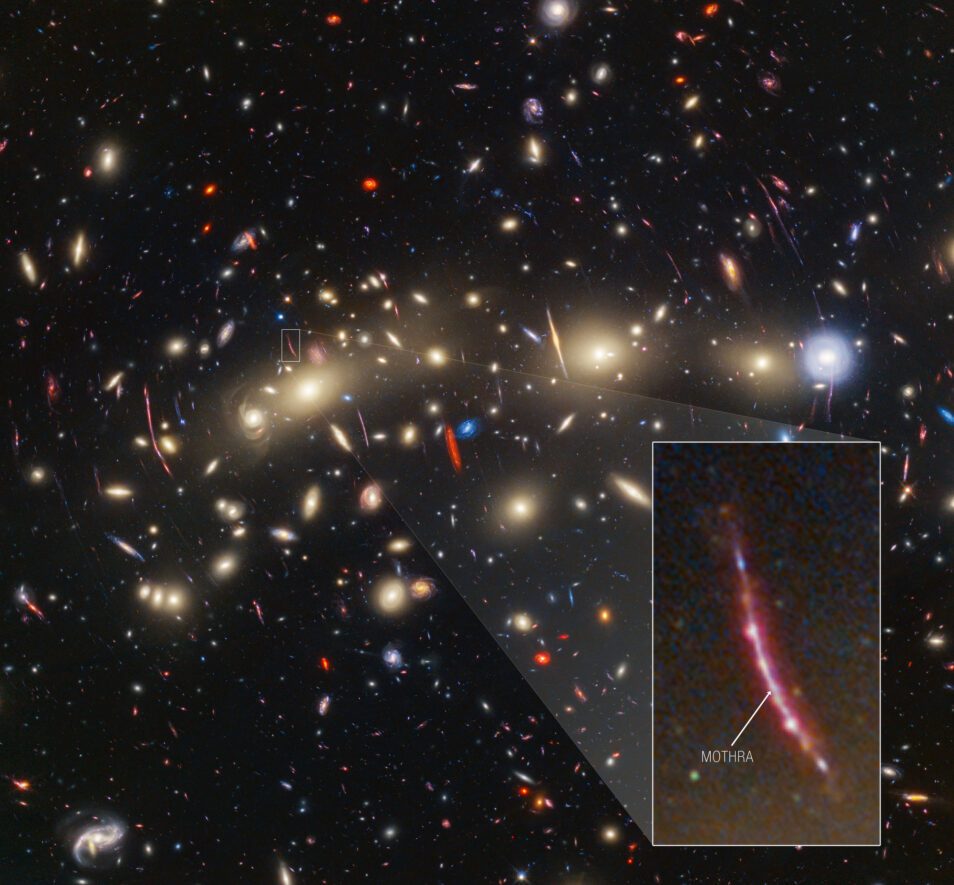It may be a little early for Christmas cards, but the James Webb Telescope doesn’t care. The space telescope captured a beautiful image of MACS0416: a pair of galaxy clusters 4.3 billion light-years from Earth. Eventually, the groups merge to form one large group.
MACS0416 was also captured by the Hubble Space Telescope. James Webb’s image shows many faint galaxies not visible in the Hubble image. Watch here Both pictures separately. This is due to James Webb’s acute infrared vision. Not only can the telescope see farther, it can also look through clouds of gas and dust. It is noteworthy that many details are visible in the James Webb image, as it has a much shorter exposure than the Hubble image, 22 hours instead of 122 hours.
The two images below are superimposed, revealing a lot of detail. Because clusters are massive gravitational lenses, light from distant galaxies is amplified and/or bent. These are the lines that appear here and there. In both groups we find all types of galaxies, including irregular galaxies, spiral galaxies, and elliptical galaxies.
MACS0416 is also called the “Christmas Tree Assembly,” and should not be confused with the Christmas Tree Assembly closer to the ground. The name is of course very fitting for all those sparkling galaxies.
Astronomers like to look at this part of the sky because many variable stars are visible: so-called transit stars. These star systems vary in brightness. If stars and galaxies (clusters) are aligned correctly, the light from some stars will be temporarily amplified. Then the brightness increases. Since celestial objects are constantly moving, the lens changes and the brightness may decrease again.
Scientists have found fourteen transients, twelve of which are located in three galaxies. One is a transient in a galaxy that existed three billion years after the Big Bang. Light from this galaxy is amplified by a factor of 4,000 by gravitational lensing, making the variable star system – called Mothra – visible. You can see Mothra below. Astronomers suspect a multiple lensing effect, where several objects work together to amplify Mothra’s light. Calculations show that one of these objects must be a globular star cluster with a mass between 10,000 and 1 million. “This globular cluster is too faint to be seen directly, so we don’t know for sure,” lead author José Diego concludes of the paper published in Astronomy & Astrophysics.

“Coffee buff. Twitter fanatic. Tv practitioner. Social media advocate. Pop culture ninja.”











More Stories
Which can cause an increase in nitrogen.
The Central State Real Estate Agency has no additional space to accommodate Ukrainians.
The oystercatcher, the “unlucky national bird,” is increasingly breeding on rooftops.